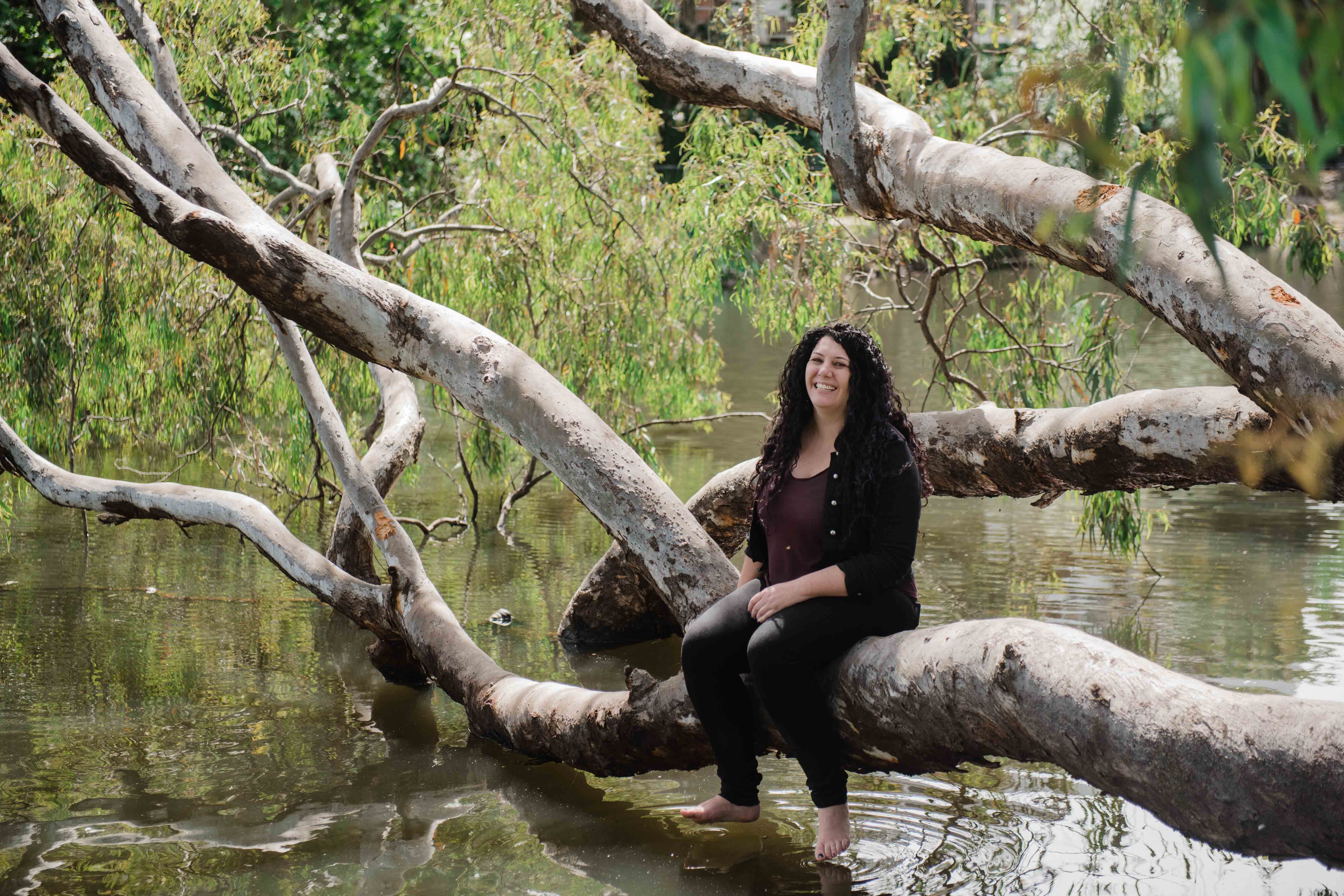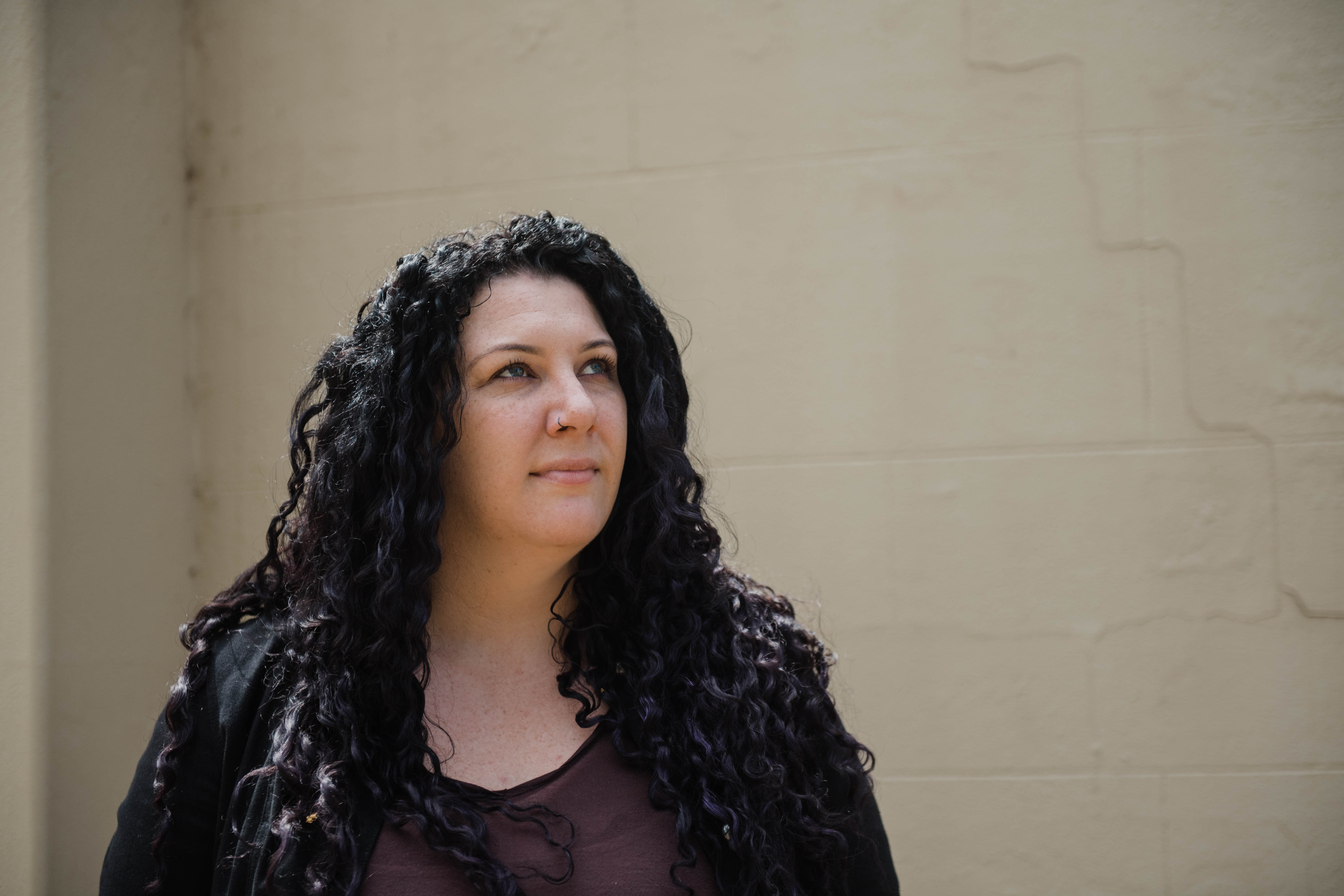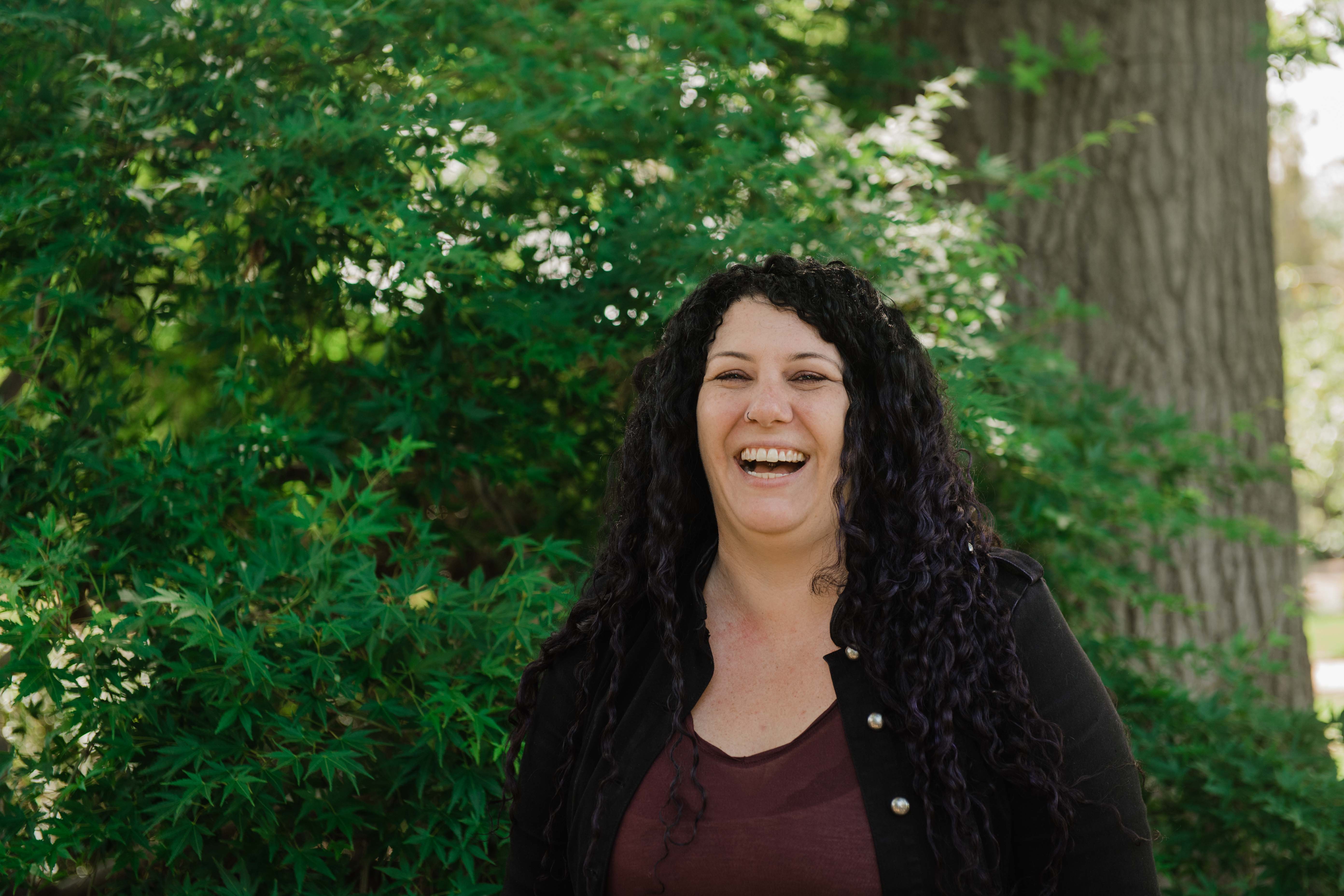Automatic language translation
Our website uses an automatic service to translate our content into different languages. These translations should be used as a guide only. See our Accessibility page for further information.
DCJ Caseworker Jade never gave up hope and used her skills, commitment and compassion to support a family make the changes they need to keep their children safe.

Eliza showed me her scars from all the years of injecting drugs. I think it was her way of being real with me. She would hold out her arms and say, ‘Jade see, I’m not using'. Eliza’s scars are on the inside too. I hope that the work we did together and her love for her children helps heal them a little.
Eliza would not have known it, but I was so anxious when I knocked on her door that first time. Eliza had five children already in care, and now there was a worrying report about the safety of her six month old baby Iggy. I knew it would be a tough visit.
Eliza is an Aboriginal woman. Her history with our department, and our history with Aboriginal people, was racing through my mind as I planned my safety assessment with my manager.
I knew I needed to be very clear if I had any chance. So I repeated my rehearsed line – ‘I am here to see what you and Iggy need and how I can help’. Iggy’s safety depends on his mum’s safety. I wanted Eliza to know I understood that.
Eliza told me afterwards that all of her children had been taken into care when they reached around six months of age – the same age as Iggy. Eliza had feared that’s what I would do too. But I didn’t take Iggy that day. While Eliza told me straight up she used ice, she explained how she planned around it. She described how she would take Iggy to day care or a relative’s home to care for him when she couldn’t.
Ice is such a menace in our town. It’s cheap, addictive and everywhere. I didn’t want it to destroy another baby’s chance to be safe with its mum.
After a hopeful couple of weeks getting to know the family, Eliza started using drugs heavily and took Iggy to stay with her Aunty Wendy. Iggy was safe, but my progress with Eliza dwindled to nothing when she turned off her phone and disappeared. I carried on my work with Iggy and his family and this is how I heard that Eliza was pregnant again. The baby’s father was her new partner Luke.
I was worried. I was already struggling to connect with Eliza to help her parent Iggy safely and now there was an unborn baby to consider. Then I noticed a change. Eliza stopped using drugs and started working with services. It was like I met the real Eliza for the first time – a smart, funny, kind woman. Eliza told me that when she is pregnant she is able to prioritise her baby’s health over the drugs. I knew I had to seize this critical moment to affect real and sustained change.
I felt the responsibility for all of Eliza’s children – this was their chance to have their mum in their lives more meaningfully.
I see child protection assessment as an ongoing process – it wasn’t a matter of deciding that Iggy was safe or not just the once, but sitting with risks and being open to the chance that things could be different for the family. I couldn’t do this alone and I knew that Group Supervision would bring together my colleagues’ wisdom and skills that I could learn from. The question we posed on the board was clear – ‘What does Iggy need from Eliza and Luke to remain safely in their care?’ I would repeat this question over in my mind on the days I drove out to see them.
I worked with other services in the family’s life – preschool, mental health workers and Aboriginal services. I made sure I used their insights to plan my next steps. Each week when I visited the family, I would have a prompt sheet of what I wanted to talk about. I would give Eliza and Luke a copy when I got there.
My time with the family needed to be purposeful and I wanted them to be clear on all the goals we were working towards.
Eliza started to pop into my office when she came to town. She would be excited to tell me something Iggy had done, like take his first step, or tell me about her latest ultrasound. I used this shared focus on the children to keep their safety at the heart of our conversations. I tried to work differently with Eliza than what she was used too. Simple things like showing Eliza my notes helped her trust that I wasn’t saying one thing to her, and recording something different.

In order to keep the momentum of change going, I would recap what we had done, what was happening now and what was coming up. This kept me accountable to Eliza and Luke, and modelled that we all had a role in keeping Iggy safe and preparing for the arrival of their new baby. I was honest when I didn’t know something. I’m new to child protection so I don’t have all the answers. I think Eliza appreciated that I didn’t pretend to be an expert, but I would go and find out.
I also tried hard to use the word ‘I’ more than ‘we’. Like, ‘I am worried’, ‘I am wondering’. I didn’t want the family to think I was hiding behind the department or not wanting to take responsibility. I was the one sitting in front of them and I think it was harder to dismiss what I said, because I was owning my opinions.
One of my biggest worries, and a risk to everyone’s safety in the home, was Luke’s use of physical violence towards Eliza. I was even warned not to be alone with him.
Violence had already had a devastating effect on Eliza’s life and her children’s – I was determined to work with Luke to help him take responsibility and create a safer home for everyone.
I started by asking Luke what he was doing to keep Iggy safe. I think Luke found it refreshing that I was upfront and put responsibility onto him for his actions. He soon realised that I wasn’t going to make Eliza do all the hard work. No matter what changes Eliza made, in order for the home to be safe, Luke’s use of violence had to end. I didn’t want to shame him, but I wanted Luke to see how it hurt his family. I talked with him about the kind of father he wanted to be to his new baby. I wanted him to think about how important his role was and support him to make changes.

Luke went to a men’s behaviour change program and got help from a community mental health worker. One day Luke told me how he was working on what he would do instead of using violence next time he got mad or upset. This was a big deal for Luke to not only admit his violence wasn’t okay, but that he wanted to make better choices. I told Luke to take a moment and think about what he had just shared with me and what an important step this was. I remember the look on his face. I could tell Luke didn’t have many people in his life who acknowledged his strengths.
I wasn’t alone in this work. Eliza’s family were a part of the safety network. I built relationships with people who loved Iggy, like Aunty Wendy and Iggy’s nanna Sue. They would call me if they had worries and took care of Iggy when Eliza couldn’t. We held a Family Group Conference with the two grandmas, aunties and other services supporting the family. We got a really solid plan – I was so impressed with how practical it was. Eliza bravely shared with her family that while she had all these people around her, she didn’t feel like they were supporting her. One of the ideas was a regular family barbeque. The family wanted to create stronger loving connections and spend time together, not just in a crisis. I was touched that they invited me to come along too.
Something that struck me about Eliza was how she always had a plan. She knew she needed to make changes to keep Iggy safe.
It was Eliza’s decision to go into detox and rehab. This was a big moment for the family. Eliza struggled with missing important things in her older children’ lives, like her daughter’s grade six graduation, Christmas and birthdays. We talked about how investing six months now would mean she will be around and fully present for the rest of their lives in the future.
I arranged for Eliza to go a women’s rehab where she could take Iggy and learn strategies to remain drug free. As her relationship with Luke developed, they decided they needed to attend rehab together, in order to support one other. The pandemic meant a long delay, but Eliza rallied her network and didn’t use drugs while she was pregnant. Cooper entered the world a healthy, much-loved baby.
It was such a beautiful moment for me when the whole family visited my office just after Eliza left hospital. The first thing Eliza did was ask if I wanted to hold her new baby.
Eliza and Luke are no longer together, but Cooper is now six months old and living with his mum and older brother Iggy. It is lovely to see these little boys together. It was an emotional moment when I was able to tell Eliza we didn’t need to work with her any longer. I don’t need to say ‘I am worried’ anymore. Now Eliza is working to see if she can grow her connection with her other children.
Eliza gave me a card from her, Iggy and Cooper. She printed out photos of her boys for me and they are on my desk as a reminder of what matters in this job. In the card Eliza wrote, ‘thank you for believing in me’. I did believe that Eliza loved her children, but more than that, her children needed me to give them the best chance of living safely with their mum.
03 May 2023